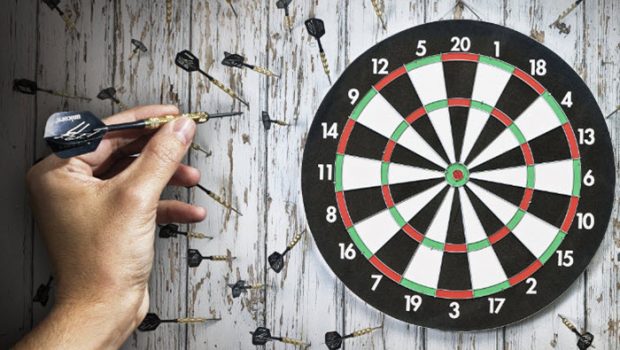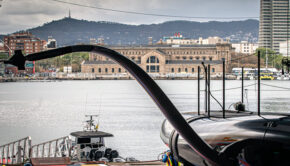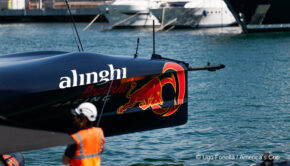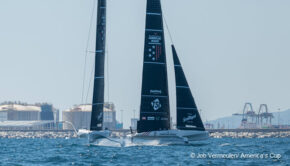Throwing darts to win America’s Cup
Published on March 1st, 2021
Due to the latest COVID-19 lockdown in Auckland, the uncertainty surrounding the America’s Cup is clouding the plans for both Emirates Team New Zealand and Luna Rossa Prada Pirelli as they prepare for the 36th Match.
The lockdown is for a seven day minimum, which is until 6:00 am March 6, but could be extended. The America’s Cup organizers have declared March 10 as the soonest competition can occur. And no one has declared whether racing will occur if the heightened restriction now in place are extended.
What’s adding to the complexity is that while the racing scheduled has been postponed from its March 6 start date, the measurement deadline was not, with both teams on March 1 having to define and finalize the configuration of their boats for the Match. This includes specific details on all the key areas such as the hull, rig, foils and many other areas of the boat including its precise weight.
Boats are configured to maximize performance in a given set of conditions, and since there is no certainty when racing will occur, the 36th America’s Cup has gone from a design contest to a guessing contest. Skilled forecasters contend there is sufficient accuracy when looking five days ahead. Beyond that you are throwing darts.
Adding to the complexity is the course locations which tend to be influenced by the surrounding landmass and the surrounding water, which makes weather forecasting a tricky business around the Hauraki Gulf. At present, the long-range forecast suggests NW 15-20 knots but it would be a brave person who bet on these conditions at this stage.
Within these key areas there are various subsections that define each element in more detail. And while the AC75 and the rules that define it are complex, the bottom line is that there is barely any wriggle room once a team has staked its claim to the type of boat that they intend to race.
The philosophy behind the AC75 Class Rule, and the measurement declaration deadline, was to encourage teams to prepare their boats to be all-round performers. However, translated that means a boat is good in all conditions, but not great in any. Teams are in pursuit of great, not good.
This is a marked change from previous Cups where the rules on declaration allowed teams to turn up to each race day in the best configuration. The result was that teams would apply to the measurers for a new certificate ahead of each day’s racing.
The main exclusion to the rules this time around is the type and number of sails, but even then there are strict rules on the weight of the sails that are carried on board and corrector weights that may be required to ensure that the all up weight of the boat remains the same.
So, as teams looked ahead to weather data that is more than a week away they had to pin the tail on the donkey as to how their boat will be configured.
It’s no easy task, but there is a further complication and that is making a list of what their replacement items will be in the case of gear failure: Replacing a broken piece of kit is not as straightforward as you may think.
First, teams need to be able to demonstrate to the measurers that the gear failure was unintentional and then that it is not possible to effect a repair.
Assuming they are successful in doing this, teams can only use replacement items that have been included on the list that they made as part of their declaration and in their order of preference. If a team is successful in their application, then their opponent automatically has the opportunity to make the same change.
So, as teams look ahead to the next available date for the start of the 36th America’s Cup, anticipating any gear failure on an advanced boat that has little in the way of technical track record will doubtless have been a major task for both the Challenger and Defender.
Indeed, a recent request for a technical interpretation on an aspect of these rules that was requested by the event organizers – America’s Cup Event Ltd (ACE) – suggests that this area may be a topic for consideration later on.
But, whether teams have been accurate in their expectations or not, predicting the future around any America’s Cup cycle has always been risky. So, as the deadline passed, both teams had to walk away from their crystal balls and leave their views of the future with the measurers.
More information:
• America’s Cup format, standings, and how to watch online: click here.
• Complete America’s Cup coverage: click here
• Additional America’s Cup information: click here
Source: America’s Cup, Scuttlebutt









 We’ll keep your information safe.
We’ll keep your information safe.